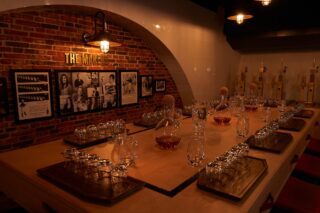This website uses cookies so that we can provide you with the best user experience possible. Cookie information is stored in your browser and performs functions such as recognising you when you return to our website and helping our team to understand which sections of the website you find most interesting and useful.
How to curate your own dream wine cellar
By Tempus | 7 October 2022 | Food & Drink, Lifestyle
Show off your wine collection in style with a bespoke wine cellar – the ultimate new interior trend
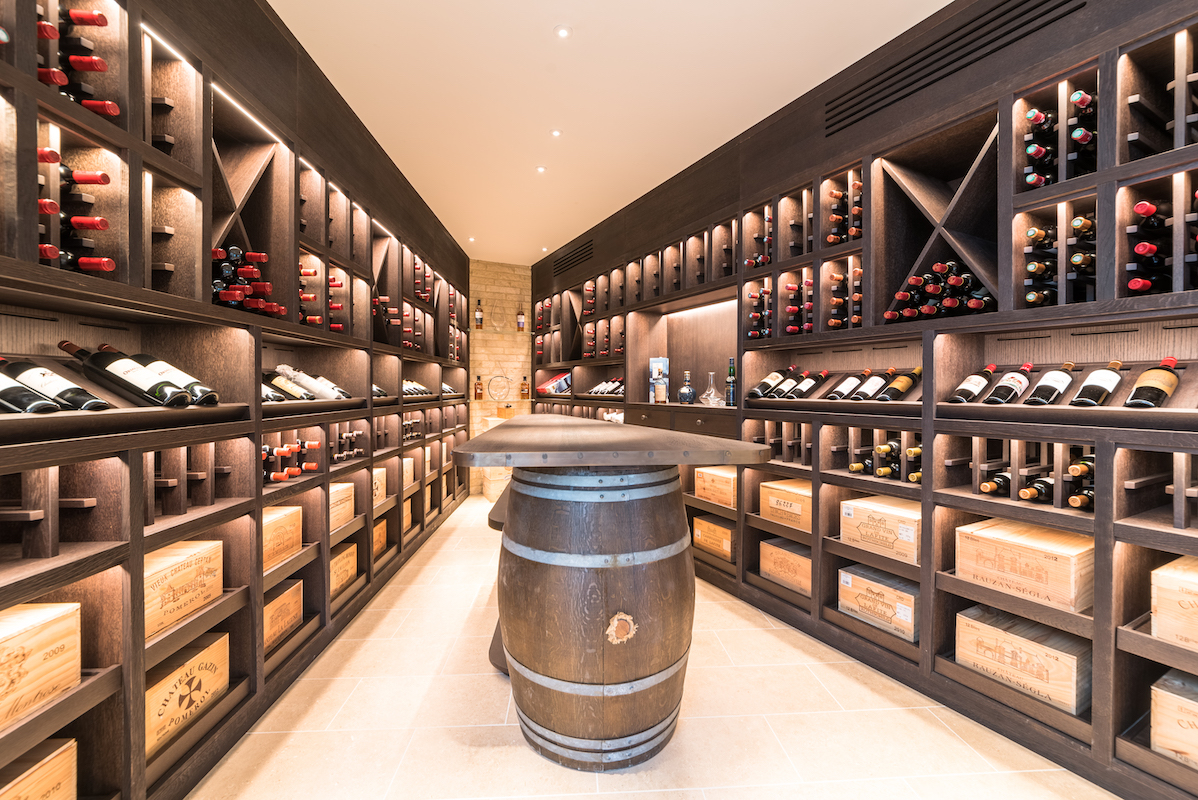
As any wine enthusiast will tell you, the only thing more important than how we store our collection is the pleasure we take from enjoying it. So, when it comes to keeping our prized vintages in perfect condition, it’s crucial to not only keep fine wines stored at the right temperature and humidity level, but to also keep one’s bottles stored horizontally and somewhere they are safe from light and vibration.
While these rules of wine storage have not changed, contemporary technology means the days of uninspiring basements full of dusty bottles are long gone in favour of a fun new twist on the wine cellar. Inspired by new trends in interior architecture, the modern wine cellar is as much an opportunity to show off your unique style as the rest of your interior décor, whether that means creating a bespoke wine library to complement your traditional country pile, or a high-tech, space-saving solution tucked away in your pied-à-terre.
According to Andrew Speer, founder of London-based bespoke makers Cellar Maison, there are ways to create the perfect cellar for any space, thanks to new technologies that allow for temperature and light control.
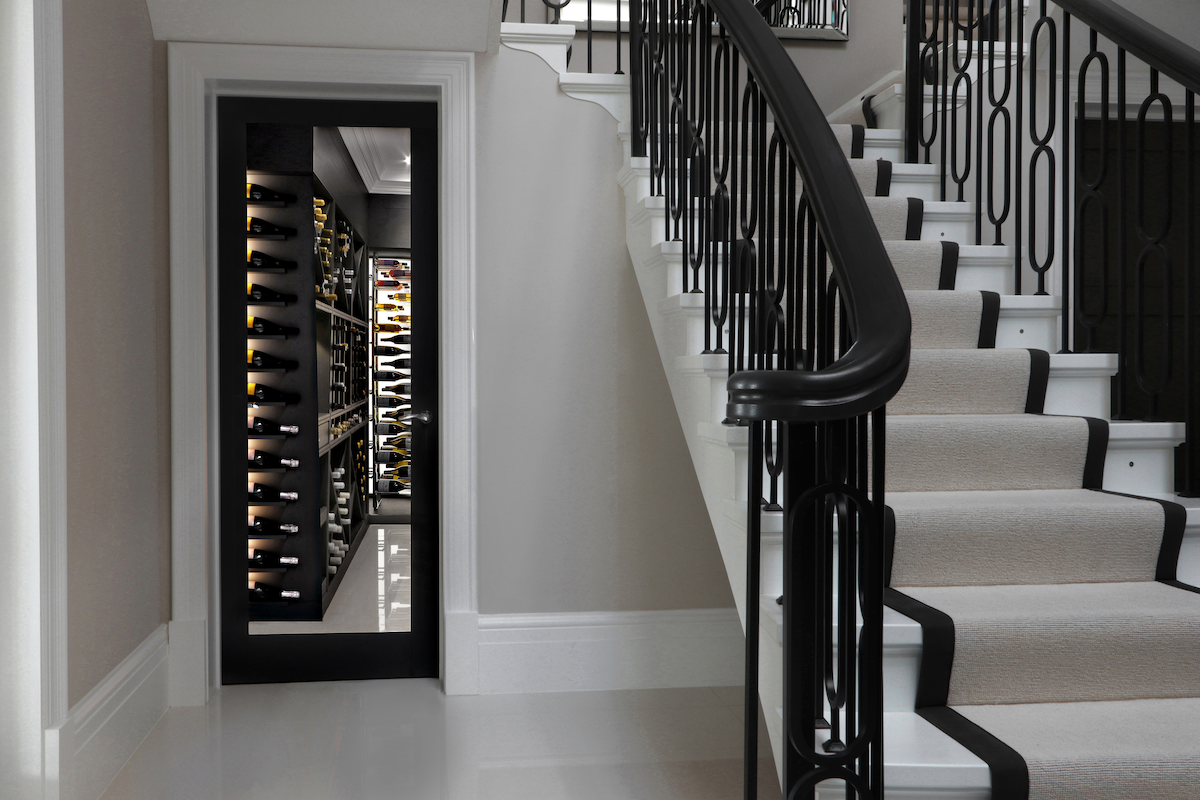
“With the help of technology such as specialist climate control systems and UV filters, to block harmful lights, there is much more scope to locate a wine room or wine wall in many above-ground areas of a property that might have been avoided in the past, when a subterranean cellar was the only safe option,” he says. “Although there are some areas that should be avoided, such as direct sunlight or near other heat-omitting sources.”
Speers’ major considerations for a wine room or wall depend on individual properties, but he suggests taking your lifestyle and entertaining style into consideration to identify the most practical locations, and suitability of space for technical and practical elements – such as the size and scope of your collection.
Cellar Maison’s mission is to match wine cellars, rooms and walls to each client’s specific style, and its projects include the homes and yachts of private individuals as well as major London landmarks. The firm’s bespoke designs include the champagne wall at Shangri-La The Shard hotel – designed to wrap around a lift shaft and extend into the hotel’s exquisite champagne bar – and a cave à vin at Gerald Chan’s Heckfield Place, Hampshire, made to play up the luxury hotel’s rustic charm.
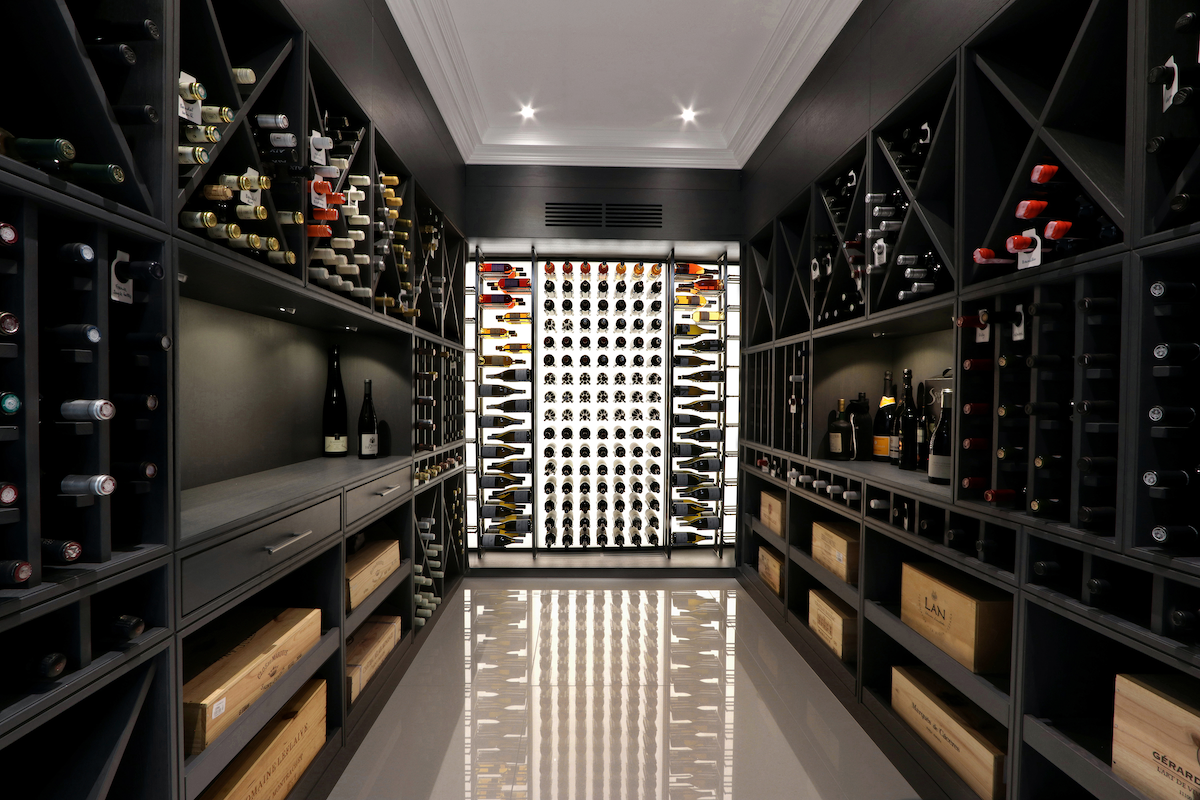
“Design elements need to complement one another, and proportion and space is key if you want something truly spectacular,” says Speers. “I recommend creating a focal point to draw the eye, such as a niche or feature wall. Size and height make a difference but are not critical to creating an amazing space, whereas plenty of subtle ambient lighting is vital to showcasing any wine cellar.”
Conversely, Dr Aylin Gurer, partner at Focus Wine Cellars, says great design must start with purpose. “Osman Gurer, our head of design, always says that a wine cellar has two main tasks: to provide an environment ensuring the best storage conditions for wines, while displaying them in the best way that the wines deserve,” she says. “In this sense, the primary element to be exhibited shouldn’t be the design of the cellar, but the wine. In other words, the cellar design should not surpass the wine, which is actually the most precious thing in there.”
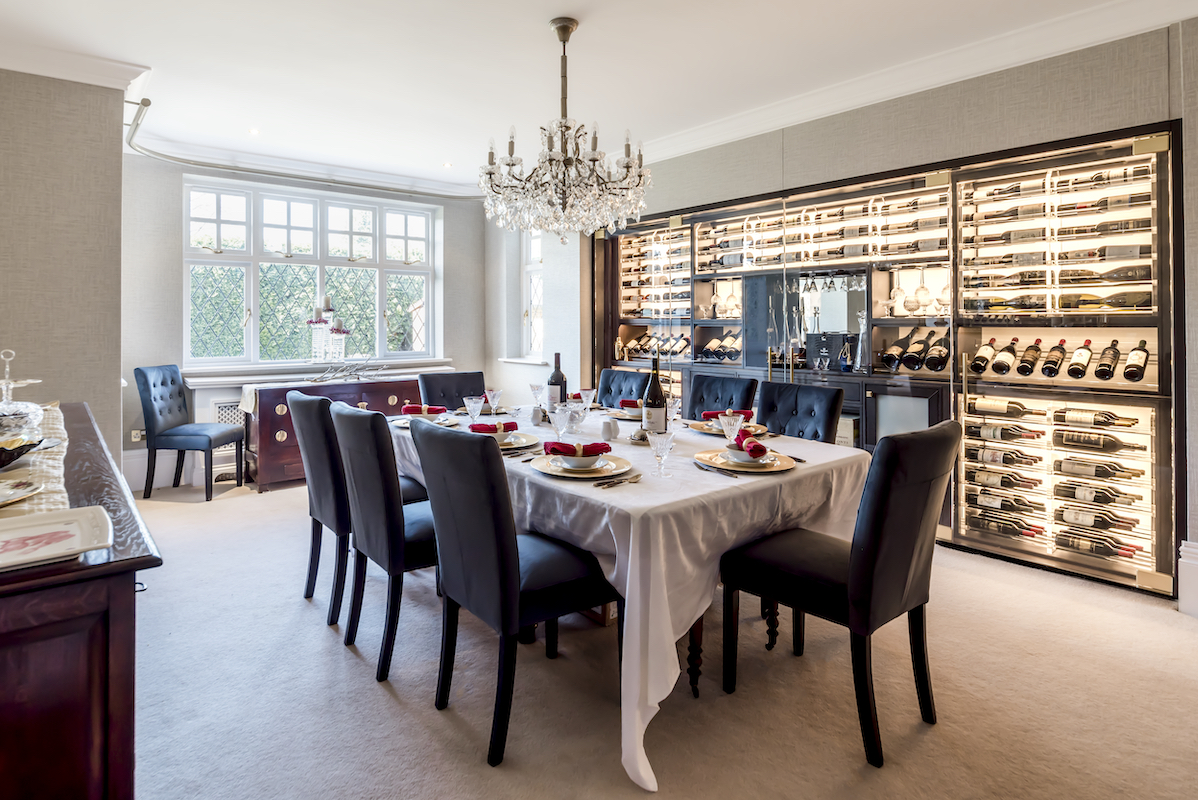
It is this ethos that has inspired Focus Wine Cellars – which has branches in Canada, Hong Kong, Singapore and Turkey – to create awe- inspiring visual spectacles for its clientele, spanning heads of state, private collectors, hospitality brands, Michelin-starred restaurants, casinos and leading architects. Playing with shape and colour, the company’s contemporary cellars and walls emphasise its clients’ impressive collections. One of the most stand-out designs must be its innovative two storey cellar at the Divan Istanbul Hotel, housing 2,000 bottles of wine across two floors, allowing long-term storage as well as immediate access to fine wines.
“There are, and will always be, wine lovers who love to have a wine cellar in the traditional style – where solid wood, mainly oak, dominates the design,” says Gurer. “The warm touch of wood always has an irresistible appeal to most of us. Having said that, the more contemporary wine cellars incorporating minimalist design are the rising stars of our time.”
With wine investment, like the worlds of art and cars, remaining a passion investment for devoted oenophiles, it is no wonder some of today’s most innovative home solutions were created by – and for – collectors seeking practical space in modern apartments. Such was the case with the ever-popular Spiral Cellars.
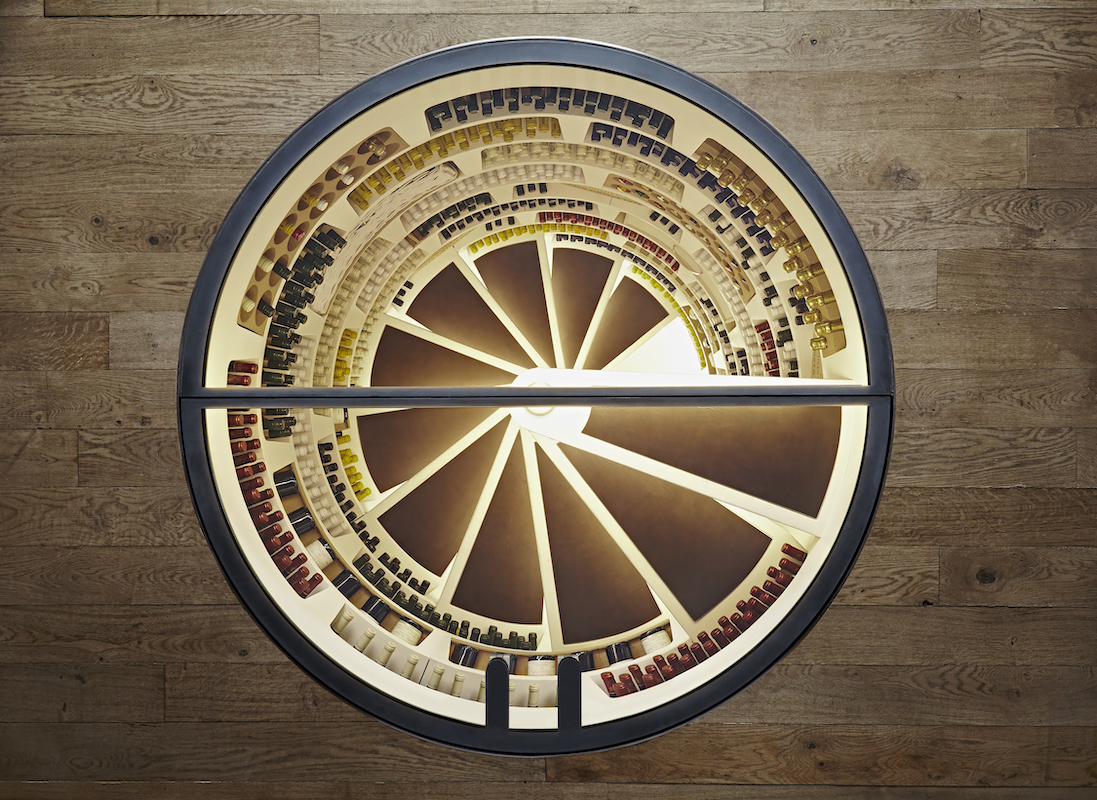
“Georges Harnois was running out of space to store his wine collection when, one day, crossing a spiral-staircase-shaped bridge, he realised the large amount of space around the central column, and voila: the idea for the Spiral Cellar was born,” says the company’s owner and managing director Lucy Hargreaves.
Since then, the company’s space-saving – and photogenic – designs have enjoyed growing popularity; the eponymous spiral cellar is built into the ground floor of a property, with a clear opening hatch that allows the owners to look down at their prized collection. It is, says Hargreaves, made more exciting by current trends towards contemporary design.
“While we aren’t seeing one particular style coming to the fore, we are seeing clients more willing to push design boundaries, wanting to take their wine cellar design to the next level, which has been a thrill for us as experts in the field,” she says. Ultimately, she recommends wine collectors ensure they look to their needs first – and always check the storage conditions.
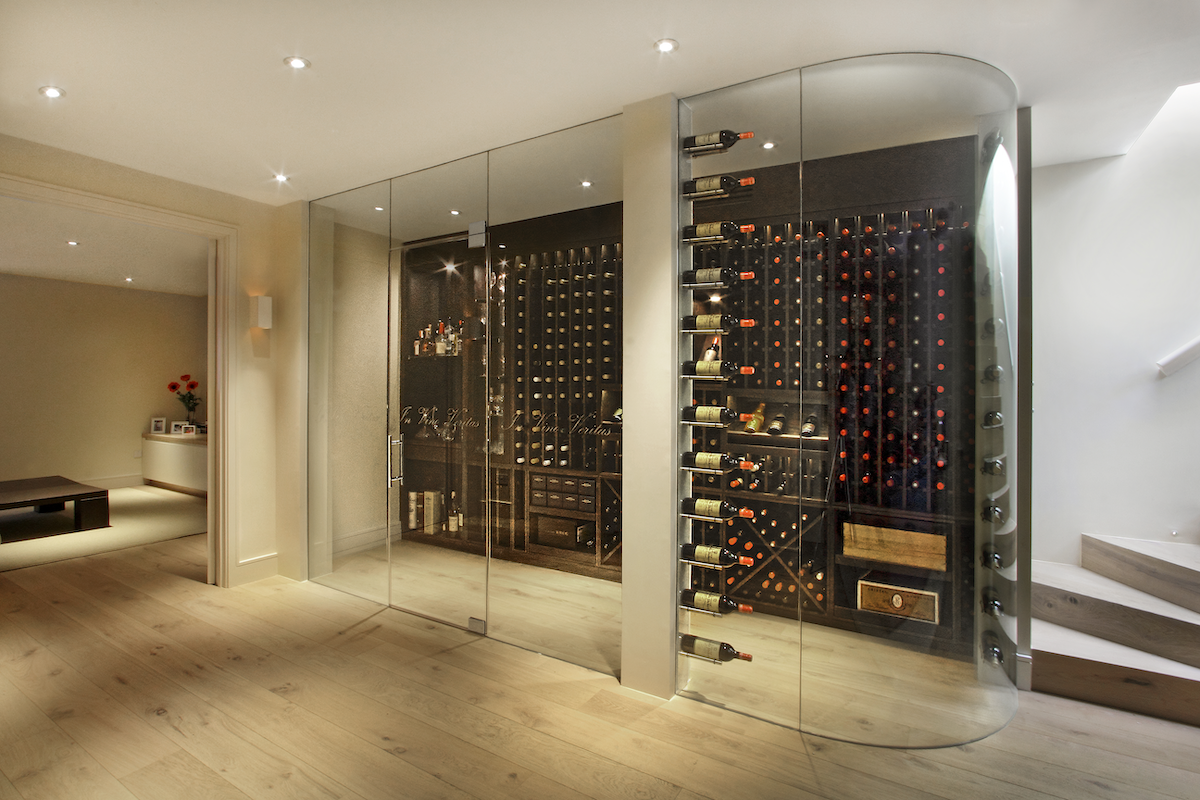
“There are a lot of wine cellars that look stunning but, when you dig a bit deeper, they aren’t fit for purpose. A common error we see is a cellar which may have been created with storage based on a uniform bottle size basis, whereas wine bottles come in a variety of shapes and sizes. Additionally, perhaps no allowance has been made for the storage of wooden wine crates, or – the greatest sin of all – the atmospheric conditions within the wine room aren’t conducive to maturation.”
Echoing this advice, Speers emphasises the art of letting your entertainment needs guide your design. “Many of our clients utilise warehouse storage so that their entire collection doesn’t necessarily need to be crammed into the home cellar, which allows aesthetics to be prioritised over capacity,” he says. “This means there is space other lifestyle enhancing features, such as a sink and tap, spirits or whisky collection, cigar humidor, stemware cabinet, bar or counter surfaces for wine tasting and, generally speaking, a more open and inviting space that has been well-considered and tailored to suit their needs.”
All that’s left to do is select your vintage – and raise a glass.






